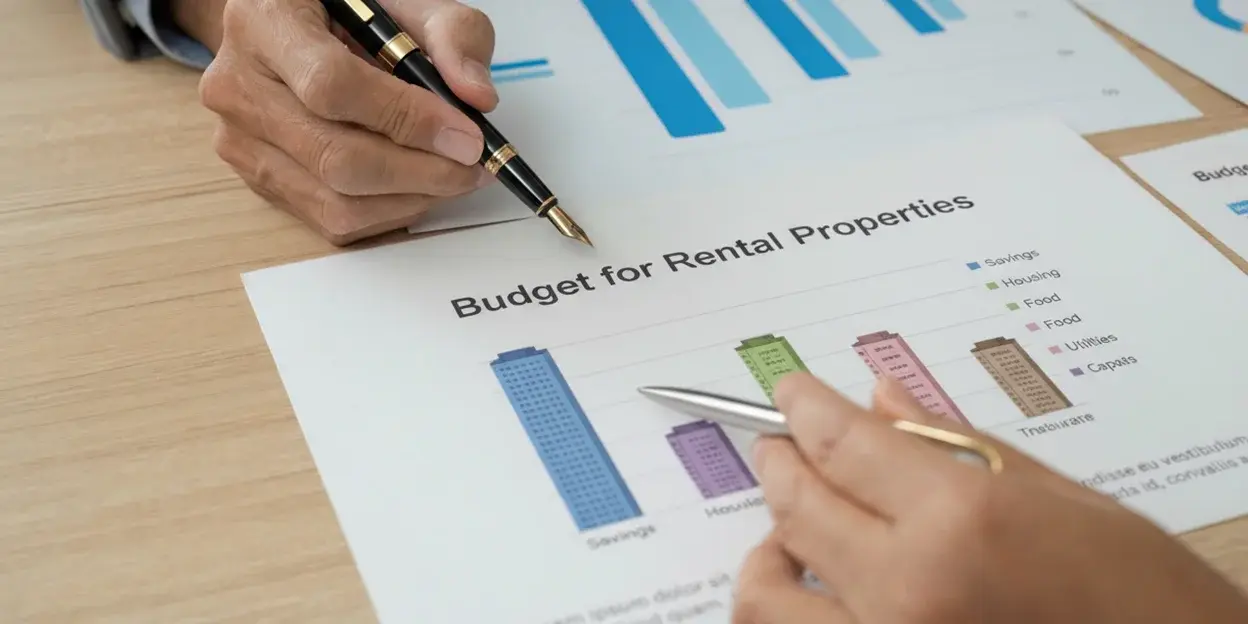Managing a rental property is like captaining a ship. You’re steering through regulations, finances, and resident relationships, all while trying not to hit any icebergs.
If you’re dipping your toes into property management, you’re probably asking, “How do I even start?” Don’t worry! This comprehensive guide provides everything you need to know about managing a rental property. It will layer in real-world details, actionable strategies, and expert-level insights that successful landlords rely on.
Ready to level up?
Let’s turn that rental into a well-oiled investment machine!
What Does Rental Property Management Mean?
Property management isn’t just about rent checks. It’s an ongoing juggling act. You must ensure the continued safety, profitability, and appeal of your property. Imagine wearing many hats. For example, a landlord, a maintenance person, an accountant, a negotiator, and a marketer. That’s property management in a nutshell!
Why Own Rental Property Now?
Take a look at these statistics. Then you can decide for yourself.
- The U.S. Rental management market reached $134.2 billion in 2025. And it continues to grow. This reflects society’s continued demand for flexible living.
- Over 67% of landlords use third-party management for tasks like resident screening and rent collection.
- According to the National Association of Home Builders housing affordability graph, 57% of all households in the U.S. are unable to afford a $300,000 home in 2025. As a result, Americans will rent for longer periods, sustaining demand for residential property management services.
- Average U.S. rental rates are rising. The median for a two-bedroom is now $1,906, up from previous years.
- Millennials and Gen Z are driving rental demand. They prefer flexibility over home ownership. This is boosting occupancy and profits for savvy owners.
A Roadmap on How to Manage a Rental Property
You can use this step-by-step roadmap to help you get started on managing your rental property with ease.
Step 1: Prepare Your Property for the Market
First impressions last. Deep clean every inch, replace worn fixtures, repaint walls with neutral colors, and repair any items that squeak, leak, or creak. Ensure smoke detectors and carbon monoxide detectors are working and up to code. Well-maintained landscaping increases curb appeal and will help justify asking for higher rent. Remember, perception is everything!
Step 2: Know the Laws So You Don’t Get Caught Off Guard
Every city and state has unique regulations on landlord-resident relationships that cover everything from security, deposits, notice periods, habitability standards, and eviction processes. Failing to comply can mean costly legal battles or government penalties.
PRO TIP: Stay informed about city and state laws relevant to property management by staying up to date on landlord-tenant laws, subscribing to legal updates, utilizing professional resources, and networking with industry peers.
Step 3: Set the Perfect Rent Price
Analyze recent rental comps, local rental vacancy rates, and your property’s amenities. Online tools like Rentometer or Zillow’s Rent Zestimate (rent estimate calculator) can help you nail down a competitive number. Pricing above market can lead to months of vacancy loss. Pricing below market value means missing out on potential profit.
NOTE: Rental pricing is hyper-local. For example, a pool in Phoenix might add $200 more a month in rent, while in Seattle, a secured bike room might be just as valuable. You have to know your market!
Step 4: Marketing Tips on How to Rent Your Vacancies Fast
Consider implementing these marketing tips and ideas, and watch the number of vacant days on the market drop.
- Write vivid, compelling descriptions. Highlight the unit’s unique features.
- Use high-resolution photos and video walkthroughs.
- Post your listings on Zillow, Realtor.com’s Avail, Apartments.com, and Facebook Marketplace.
- Consider using an Apartment Locator service for a nominal fee (if they have them in your area).
- Offer virtual tours.
- Utilize platforms like Instagram and TikTok to share photos, videos, and property details.
- Consider running social media ads.
- Implement a resident referral program.
- Consider staging your vacant units to showcase their potential.
- Offer move-in specials or incentives.
- Use bandit signs and/or banners, balloons, and flags.
Did you know? In major markets, properties with professionally photographed rental listings rent faster than those with DIY phone photos.
Step 5: Screen Residents Like a Pro
Before you get started, learn the Fair Housing Act of 1968 and abide by it.
Now, back to screening. Thorough background checks are extremely important!
- Run full background and credit checks.
- Verify income. Use an income requirement of somewhere between 2.5 and 3 times the amount of the monthly rent.
- Verify previous rental history for the past year (at least). Call previous landlords and check for red flags. For example, late payments, evictions, or property damage. These are deal breakers!
EXTREMELY IMPORTANT PRO TIP: Have a written resident rental criteria and follow it!
FOR EVERY PROSPECT! You must have fair and lawful criteria and be consistent with them to avoid fair housing issues and discrimination lawsuits. These can happen even if you didn’t do anything wrong. That’s why documentation is so important! Document Everything! Every Time! If you don’t, the penalties for fair housing violations are astronomical and could put you out of business.
Managing Your Rental Finances
Step 6: Have a System to Track Every Dollar You Make
Here are the expense categories to track.
- Repairs and maintenance (keep digital receipts).
- Landscaping and snow removal.
- Utilities (where landlord-paid).
- HOA fees (if applicable).
- Property taxes and insurance.
- Mortgage payments.
- Capital improvements (for depreciation deduction).
Step 7: Plan for Surprises with a Reserve Fund
Roofs, HVAC systems, and appliances don’t last forever. It’s best to save for replacements over time. Set aside 1% to 2% of the rental property’s value each year. Put this money into a dedicated CapEx account. Emergencies aren’t an “if” it will happen proposition. They are a “when!”
Step 8: Organize Documents and Keep Them Secure
Move leases, inspection reports, and correspondence online using a secure cloud solution. This minimizes the risk of losing vital information. It also simplifies the retrieval process during audits or disputes.
Maintenance and Upgrades Are Your Investment’s Lifeline
Step 9: Implement a Preventive Maintenance System
Let’s talk about preventive maintenance. If you are proactive, thus the word preventive, it could save you thousands (or more).
Schedule the following preventive maintenance tasks.
- HVAC servicing (spring/fall)
- Gutter cleaning (biannually)
- Smoke detector checks (annually)
- Appliance inspections (every 6–12 months)
Preventive maintenance results in fewer emergencies and happier residents!
Step 10: Handling Maintenance Requests Efficiently
Empower residents to submit requests digitally. Respond within 24–48 hours. Even for minor issues. Swift repairs build trust. They also encourage lease renewals. And they help you identify small problems before they escalate.
Step 11. Upgrade for Value, Not for Show
Focus on upgrades that offer a real return on your investment.
For example:
- Smart locks and thermostats. These enhance security and efficiency.
- In-unit laundry. These are highly desirable among all demographics.
- LED lighting and Energy Star appliances. These lower utility bills and appeal to eco-conscious residents.
Managing Landlord-Resident Relationships
Step 12: Master Clear and Consistent Communication
Set expectations from day one. Document every agreement (even the minor ones)! Text messages and emails create a clear communication trail, reducing misunderstandings.
Step 13: Move-In / Move-Out Processes
Use detailed checklists for both move-ins and move-outs. Photograph every room before a new resident arrives. And do the same after every resident moves out. Share copies with the resident to avoid security deposit disputes.
Step 14: Enforce Lease Terms Consistently and with Professionalism
Address late rent or violations promptly. And approach every situation with empathy and fairness. A small act of understanding, like a one-day grace period, can dramatically improve retention. Just remember to be consistent. What you do for one resident, you must do for all. You don’t want discrimination issues because you offered a small act of kindness to one person but not another.
Step: 15. Stay Legally Compliant and Informed
Laws change frequently. In 2025, increased scrutiny was given to short-term rentals, eviction moratoriums, and new anti-discrimination statutes. Regularly review your leases for compliance and consult an attorney for major issues.
And now, a quick mention about automation.
Smart Automation in Rental Management
Modern landlords embrace technology. Property management platforms now provide the following.
- Automated rent reminders and late fee assessment.
- Digital lease signatures.
- Maintenance request tracking and vendor coordination.
- Online portals for residents and owners.
- And much more!
Over 91% of property managers report efficiency gains and increased resident satisfaction after integrating automation tools.
Ready to Take Your Property Management Success to the Next Level?
Unlock private access to our Property Leasing Productivity Playbook. It’s an essential guide packed with scalable systems, smart tools, and time-saving strategies for landlords and property managers.
Disclaimer: This blog is for informational purposes only. It is not intended as legal or financial advice. Please consult with your attorney, financial advisor, or property accountant before making any specific property management decisions.




